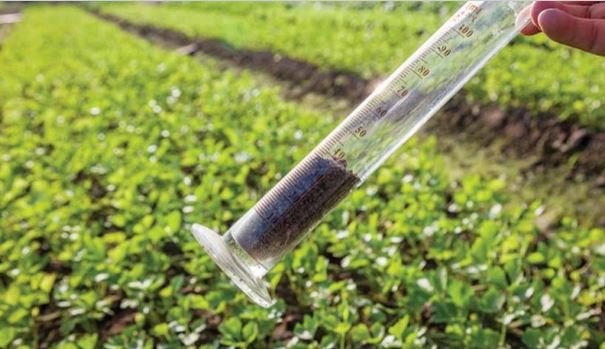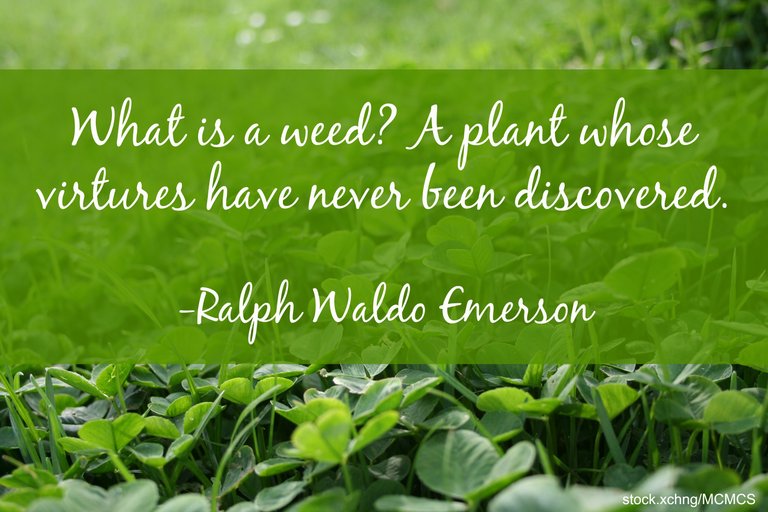How To Select The Appropriate Site for Gardening?

Image Source

Gardening has been the main leisure activity for some individuals for some time, however this year its prevalence developed like bamboo. This may have been because of a move in needs invigorated by the current financial atmosphere or the foundation of various prominent gardens.
Things to consider in choosing garden site.
Pick the site for your garden deliberately. The garden site will influence all other gardening hones, so select the most ideal site to develop sound plants. When settling on a site, consider introduction to sunlight, soil sort, and pesticide tainting.
Sunlight Exposure
Vegetables require sunlight keeping in mind the end goal to develop well and create extensive yields. A decent site gets at least 6 hours of full sun every day, with 8–10 hours being perfect. Consider shading from structures, wall, trees, and bushes while choosing your garden site. Vegetables don't contend well with trees or different plants for sunlight, dampness, and supplements. While choosing a garden site, maintain a strategic distance from the region of huge trees, regardless of the possibility that the vegetables would not be shaded to any incredible degree. Destinations with southern exposures are for the most part hotter than those with northern exposures.
Soil
Soils are comprised of various particles called sand, sediment, and dirt. Sand makes up the biggest of these particles, trailed by residue, and mud makes up the littlest particles. Most soils are comprised of a blend of sand, residue, and earth, which influences soil waste, structure, and richness. Pick a site with great seepage. This is essential for advancing great root development and maintaining a strategic distance from plant illnesses, especially root spoils. Soil sort influences seepage. Substantial mud soils are moderate in drying out and are hard to develop and work appropriately.
Greatly sandy soils may need organic matter and may dry out too quickly between watering. The best soil is between these two extremes. The correct kind of soil, in any case, is not as vital on the off chance that it is all around depleted, enough provided with organic matter, and holds dampness. One procedure for choosing a site is to keep away from ranges where water pools for drawn out stretches of time. Including organic matter through rotting plant or creature material adequately enhances soil structure.
Significance of organic matters.
Increase the capacity of soil to hold water and small particles of earth separated so they can deplete out abundance water all the more effortlessly
Provide earth soil with required pore space, which lets in air fundamental to great plant development
Prevent modest particles of mud soil from solidifying themselves together and, in this manner, ending up noticeably more effortlessly infiltrated by plant roots
Fill in overabundance pore space of sandy soil, therefore backing off waste and expanding the capacity to hold water
Moderate soil temperature
Release nitrogen and different supplements for plant use through the procedure of rot
Increase the cation trade limit of soil, particularly, calcium, potassium, and magnesium with the goal that soils can hold and discharge more supplements
Buffer soil to lessen stresses, for example, dry spell on plant development
Provide a nourishment hotspot for the soil microorganisms that enhance general soil properties.

Image Source
Overwhelming soils low in organic matter and soils containing a lot of fine mud have a tendency to solidify and covering on the soil surface. Earth soils are impervious to changes in their structure; be that as it may, joining coarse sand or organic matter may enhance a little region. You can work an inch or two of coarse sand or organic matter into the soil in any one year. Sand enhances soil seepage and workability of earth soils, however past that it is of constrained esteem contrasted with organic matter.
Wellsprings of organic matter incorporate excrement, compost, peat greenery, spent mushroom substrate, and sawdust. Organic matter can be created as winter cover crops, for example, shaggy vetch or winter rye; green excrement crops, for example, vetches or clovers; or turf when the land is not utilized for gardening. A vegetable grass blend, for example, rye and bristly vetch, is a powerful green compost trim for enhancing soil. Select a spot with great fruitfulness. Play out a soil test to all the more precisely decide the ripeness status of the soil. In the event that different plants are developing soundly in the site, it likely has great ripeness.
Pesticide Exposure
A few destinations have a more noteworthy shot of pollution from pesticides than different locales. It's best to maintain a strategic distance from those destinations. For instance, if your neighbor's yard is free of weeds while yours has dandelions, this may be an indication that your neighbor is utilizing a herbicide. All things considered, abstain from planting close to the property outskirt imparted to your neighbor. Likewise, dodge rights-ofway where electrical cables are found and areas close railroad tracks or roadways since these regions are by and large showered every year with persevering herbicides.
Pivot the area of the garden at regular intervals when space is accessible. This will help enhance the state of the soil and keep away from plant infections. In any event, you will need to turn among plant families inside the garden. Fall is the most attractive time to work the soil when grass will be turned under. This enables more opportunity for the grass to deteriorate amid fall and early spring and results in better conditions for garden plants. On the off chance that turf is not planted on the site, work it during fall or early spring.
A few focal points exist for setting up the site in fall. You might have the capacity to plant prior in spring on the grounds that the soil is fundamentally prepared; organic matter that is included fall will have had more opportunity to rot; and other soil changes, for example, lime, sulfur, and shake phosphate have more opportunity to respond with soil particles. Also, bugs and illness causing life forms might be slaughtered when presented to harsher soil conditions or being covered. On the off chance that the garden is on an inclined territory, consider working soil in the spring or planting a fall cover edit.
On the off chance that soils on inclined locales are left exposed over the winter, disintegration or spillover can happen, which can have negative outcomes for the garden soil and potentially result in more extensive ecological concerns, for example, tainting of groundwater with nitrogen or potentially phosphorus. Regardless of whether you set up the garden in fall or spring, don't work soils unless they are adequately dry. To decide whether soil is adequately dry, press a modest bunch of soil firmly in your grasp.
It ought to promptly disintegrate when discharged on the off chance that it is adequately dry; on the off chance that it shapes a reduced, sloppy mass, it is excessively wet, making it impossible to be worked. Substantial earth soils that are worked when they are wet lose their brittle surface, turn out to be hard, smaller, uneven, and, thusly, useless. A few periods of cautious dealing with are frequently required to reestablish such a soil to typical condition and creation. Numerous gardeners work the soil utilizing a rototiller. On the off chance that the zone is littler, you can likewise viably utilize a scoop.
Notwithstanding what gear you use to set up the soil, consider soil tilth, or the physical state of the soil. Each soil has qualities that decide the tilth most appropriate for planting. No soil ought to be attempted to a fineness that will bring about crusting of the soil surface after rain occasions or watering. Abandon some overwhelming garden soils similarly unpleasant and cloddy to advance air circulation and water development and decrease crusting of the soil surface.

Image Source
Soil Testing
Soil is the establishment for developing plants. Plants will flourish in a decent soil and battle in a poor soil. Keeping in mind the end goal to treat your soil well, you have to learn however much about it as could be expected. One of the most ideal approaches to find out about your soil is by trying it. Soil testing can give data about the soil pH, supplement levels, capacity to hold supplements, organic matter substance, and solvent salt levels.
Utilizing the exceptional outcomes from your soil test, proposals are accommodated altering pH and supplement levels, contingent upon who plays out the soil testing. You can buy soil testing units from your neighborhood district helpful expansion office or garden supply focus. We suggest testing your soil no less than like clockwork.
Soil pH
Soil pH is a measure of how acidic or soluble a soil is. When all is said in done, vegetables develop best with a soil pH in the vicinity of 6.0 and 6.5. Soil test results may demonstrate a requirement for a liming material if the pH is lower than 6.0. At whatever point conceivable, apply a liming material amid fall before planting to give a while to these materials to start responding with soil particles. Liming materials incorporate limestone and wood fiery debris.
In the event that soil test comes about demonstrate that the soil pH is above ideal, it should be brought down. A few materials for bringing down soil pH incorporate sulfur, peat greenery, and cottonseed feast. For extensive ranges, sulfur is likely the most efficient alternative. Sulfur responds gradually with soil particles; along these lines, permit a while for changes in soil pH to happen in the wake of applying it. At whatever point conceivable, apply sulfur well ahead of time of planting to give adequate time to response with soil particles.
Organic Matter
The organic matter substance of a soil can be examined as an extra test while presenting a soil test. Most vegetables develop best in soils with organic matter substance in the vicinity of 2 and 5 percent. On the off chance that the organic matter substance of your soil is beneath 2 percent, consider adding revisions to your soil to expand the organic matter substance.
Salt Levels
A soil's dissolvable salt level can likewise be examined as an extra test. High solvent salt levels can be destructive to plants. On the off chance that your garden site is presented to precipitation and snow, the solvent salt level is not liable to be harming to plant development. Notwithstanding, in the event that you are utilizing a defensive structure, similar to a high passage, solvent salts levels can turn out to be sufficiently high to hurt plants. On the off chance that levels get too high, there are possibilities for diminishing them.

Image Source

Reference:
Vegetable Gardening
By:E. S. Sánchez
This post received a 4.5% upvote from @randowhale thanks to @juvyjabian! For more information, click here!
Thanks so much for passing along your extensive knowledge about gardening for us all to learn, @juvyjabian
Thanks for sharing! :)
Upvoted!
Glad you like it
I sure did! :)
Great post.. Thanks for this.. this post increase my gardening experience.. like it very much.
Im honored.
Wow That Nice info 🙌 by the way My Mom Like Gardening so much 😂
Great. I'd love to hear how mama did it.
Thanks for your encouragement with me just getting started. I just posted my second post ever and think it turned out much better. I would appreciate your advice if you have a chance to see it. Your channel looks very interesting. Upvoted and followed. Thanks again for the welcome yesterday.
Try to join chat groups in discord. It will help you gain followers and be noticed.
thanks a lot, i really appreciate the help
Here's the invitation link for steemspeak in discord https://discord.gg/kJCWTh
@juvyjabian got you a 100.0% @minnowbooster upvote, nice!